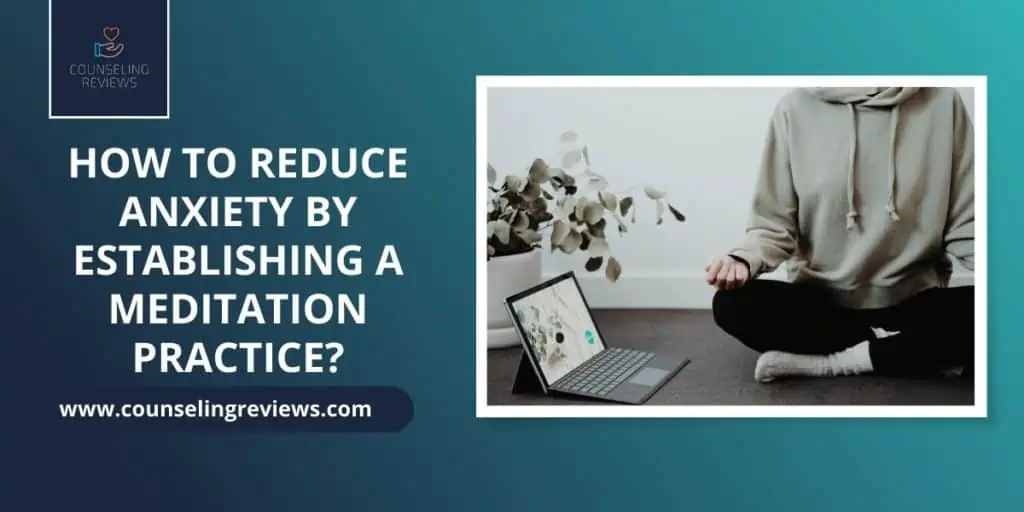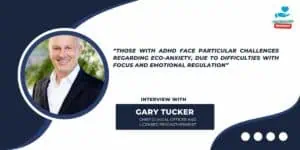There is not one human being that constantly feels at peace. Even when we are resting, there are times that we do not feel as if we truly are. Stress and anxiety are very common among people. Some people even let this rule their lives.
Meditation is a practice used by many individuals and is extremely helpful in creating awareness and to reduce anxiety levels. Meditation is known for its’ ability to calm the mind, reduce stress hormones and panic attacks, and eliminate anxiousness. Who is ready to learn the ultimate guide to meditating?
What are Stress and Anxiety?
Stress is an overwhelming feeling when we experience events that make us feel anxious, nervous, angry, or even frustrated. These situations often lead to physical tension. Stress is not always negative; it can be positive.
Negative emotions or feelings may lead to anxiety.
Anxiety is our body’s response to these stressful situations. When experiencing anxiety, a person’s body generally enters fight or flight mode. Constantly experiencing anxiety is not healthy. This situation needs to be addressed. Mindfulness and meditation have become popular tools for assisting with anxiety.
Many people rely upon meditation to help bring them back to a normal state of mind; however, one must note that this is not meant specifically for diagnosing or treating anxiety. The opinion and support of a professional is valuable in extreme cases. Anxiety counseling is a very important activity in improving your mental health.
During the Covid-19 , there are various forms of online counseling for anxiety also available. Seeking a professional opinion or guidance is not a form of weakness; it shows strength and courage.
Accepting anxiety counseling indicates that you care about your life and want to change for the better!
Steps and Ways to Calm Your Anxiety
- Be aware and present. It is important to know what you are experiencing but not be critical of yourself for your emotions. Accept the feelings that your body is feeling in the present moment. Take note of the changes in your mood.
- Breathe, breathe, and breathe! It is important to note how you are breathing during a stressful situation. Focus on your breathing and take control. Concentrate on bringing focus to a central area in your body. One spot; focus on that spot. Ensure that you can feel the presence of your breathing in this region. Focus on this area and continue to breathe and concentrate on breathing. During this moment, nothing else should matter.
- Be attentive to your body. Once you have completed breathing and focusing on a central region in your body, become aware of your overall surroundings. Feel what is happening to your body and inside your body. Start to concentrate on your inner-centered breathing again. Repeat this process several times.
- Be kind to yourself. It is normal to experience anxiety. You need to look after yourself and take care of your mind and body during these situations.
This process does not work for everyone; however, research has proven meditation to be an effective tool. Creating space between your brain, body and emotions is a powerful trait to possess. Practicing meditation can reduce the intensity of your anxiety
Getting used to having physical symptoms of stress and anxiety should not be the case. A person should not be experiencing these feelings daily. Do not feel that this is something small that you have no choice but to deal with in your life. If you do not address the problem, what started as something minimal can become a bigger problem. Avoiding your condition can become detrimental to your health and well-being. Take action today!
Mindfulness Reduces Anxiety
Mindfulness is the ability to be present and aware without being overwhelmed and overly reactive. This awareness results from being attentive and non-judgmental of where you are and what you are doing. Mindfulness allows for the mastery of oneself. Being mindful allows you to look at situations differently and change the factors you have control over, which is your response to situations.
Being mindful helps you accept the situation. Attentiveness teaches you to acknowledge and cope with negative emotions without evaluating the situation and being hard on yourself. Acknowledgment helps reduce negative feelings.
Mindfulness enables you to determine the underlying causes of your stress. This gives you the opportunity to address the issues causing these emotions.
Being attentive allows you to acknowledge your feelings without letting it consume you. Mindfulness gives you a sense of freedom.
Awareness brings about a sense of stillness and understanding, which is soothing.
Teach yourself to be comfortable in uncomfortable situations. Acceptance is an empowering thing and can be the change you need!
Meditations Practice to Reduce Anxiety
Simple meditations to control anxiety reassure us that allowing unpleasant emotions to exist does not result in any action being taken. Acceptance is the first step; it leads to making decisions to deal with the feelings.
Do not deny a negative mindset! Denial is detrimental to your mental health. Although acceptance does not fix the issue, it allows you to deal with the experience and change it. Once you have accepted the situation, you can work through your body to examine the feelings.
When meditating for stress and anxiety, ensure that you are in a relaxed position. This heightens your alert levels, which is critical. Thank yourself for allowing yourself to improve. Be grateful for being present and deciding to take control of your life. Allow yourself to connect with your mind and body. Acknowledge tension in your body and your mood. Feel what demands to be felt.
After this, bring the attention back to your breath. Focus on the expansion and contraction of your chest with awareness. Breathe into your entire body and let go of the tension. Be kind, gentle, and compassionate to your body and mind, as it is normal to have anxious thoughts during this process. Continue to breathe and reflect on your meditation.
Guided meditations consist of facing your anxiety head-on.
These meditations are a challenging experience as you need to intentionally investigate your anxious feelings. When deciding to go ahead with practices like these, you need to feel comfortable as you are putting yourself into a tense situation. A perfect example of one of these meditations is ‘A Meditation for Anxious Emotions’ by Bob Stahl.
How to Stop a Panic Attack
Many individuals who suffer from panic attacks describe a profound sense of disconnection from reality that can be terrifying and disorienting. You might feel completely powerless, convinced that a threat is imminent, and believe there is nothing you can do to help yourself. The fear of experiencing another panic attack can further perpetuate this cycle of anxiety and insecurity. If you’re currently grappling with the fear of a recurrence of panic disorder, remember that you’re not alone, and assistance is available.
Consider a Meditation for Exploring Panic Attacks:
Panic attacks can occur unpredictably, even in public places. While being in public may seem like the worst scenario for an attack, it can also serve as an opportunity to explore your mind and body.
Mindful inquiry can help you investigate the underlying causes of your panic, ultimately freeing you from its grip. Practice these techniques the next time you sense panic rising.
Take a moment for mindful inquiry:
- Begin by assessing whether this is a suitable time to delve into your emotions. Do you feel safe right now? If you feel secure, proceed to the next step. If not, it’s okay to postpone this practice until a more comfortable time, perhaps when you’re back in the privacy of your home.
- Your practice starts the moment you tune in to your breath. Regardless of your location – running errands, interacting with people, waiting in line, or shopping – your breath is always with you and serves as your anchor to the present. Pay attention to your breath, feeling the warmth as you inhale and the coolness as you exhale, noticing the rise and fall, and the in and out of each breath.
- Take a moment to acknowledge and accept all the emotions you are experiencing at this moment. If you feel like things are spiraling out of control, simply recognize it as a feeling without attaching specific details or stories to it. If you are grappling with an overwhelming fear that you are losing your grip on reality, acknowledge this feeling without attempting to analyze or judge it. Grant yourself permission to recognize and acknowledge these emotions as they surface and allow them to be.
You might be thinking: “I feel like something terrible is about to happen. I feel like I’ve lost touch with reality. I feel like I can’t trust anyone. Maybe I can’t even trust myself.” Other unrelated thoughts and feelings may also emerge, like “I’m hungry” or “I hope he calls soon” or “I wonder where I left my to-do list.”
Create space in this moment to let these emotions arise and try to stay with them as they are. Just acknowledge what’s present without becoming attached to any specific thought or feeling. - You may feel a strong urge to resist or fight against these distressing and frightening emotions, which is a common reaction. We all naturally gravitate toward what feels good. However, for this exercise, practice non-striving: refrain from trying to change or redirect your emotions. Let your feelings be as they are. The less effort you exert in resisting or altering your panic, the less control it can exert over you.
- Remember to remain aware of your breath and reconnect with the present moment.
Choosing Between MBSR and MBCT
Both MBSR (Mindfulness-Based Stress Reduction) and MBCT (Mindfulness-Based Cognitive Therapy) have mindful awareness at their core. In these programs, participants are led through a series of practices that promote paying close attention to experiences, thoughts, emotions, and bodily sensations. To make an informed decision on which program suits you best, it’s essential to understand the distinctions between MBSR and MBCT.
Key Differences Between MBSR and MBCT:
MBSR (Mindfulness-Based Stress Reduction)
- Designed for a broad audience, especially those dealing with chronic stress.
- Focuses on how mindfulness can alleviate stress, including the stress associated with chronic illnesses.
- Utilizes mindfulness practices to reveal various approaches to responding to suffering.
- Encourages embracing pain and turning toward it to transform your relationship with suffering.
- Emphasizes being present in the moment.
- Recommended for general psychological well-being, stress management, and as an intervention for anxiety symptoms.
MBCT (Mindfulness-Based Cognitive Therapy)
- Designed to prevent relapses of depression.
- Explores how mindfulness can help individuals maintain well-being while coping with depression or anxiety.
- Uses mindfulness practices to provide insight into negative thought patterns linked to depression and anxiety.
- Aims to alter your relationship with suffering by recognizing thought and emotional patterns.
- Emphasizes the ability to choose how to respond to negative mental states.
- Recommended as an adjunctive treatment for unipolar depression and as an intervention for anxiety symptoms.
How Mindfulness-Based Cognitive Therapy Aids in Managing Anxiety:
MBCT employs a skills-based approach, prompting individuals to investigate, become familiar with, and redirect the thought processes that contribute to their difficulties, such as cognitive distortions, negative self-talk, or recurring negative thought patterns.
Shifting these ingrained thought processes requires close attention and persistence. MBCT doesn’t aim to change the content of challenging thoughts; instead, it focuses on fostering consistent awareness of these thoughts and patterns. This heightened awareness diminishes the grip of persistent and unproductive thought cycles and narratives.
Like MBSR, MBCT follows an eight-week format with weekly two-hour classes, including a mid-course day-long session.
The program combines guided meditations, group discussions, various forms of inquiry and reflection, and assignments for continued practice at home. Repetition and reinforcement, revisiting the same concepts regularly, are fundamental to the program’s effectiveness, both during and beyond the initial MBCT program, in daily life, regardless of circumstances.
Mediation as a Whole
Meditation is a practice that is constantly evolving. It is a popular method to deal with stress and anxiety as there are so many different practices to try, such as meditations for panic attacks and guided meditations.
Mediating and practicing mindfulness can all be done from the comfort of your own home or with professional assistance. These practices are helpful in maintaining health and overall well-being. Stress and other anxiety disorders are very real problems that people suffer from. They need to be addressed and taken seriously as mental health is an extremely important aspect of any person’s life.





